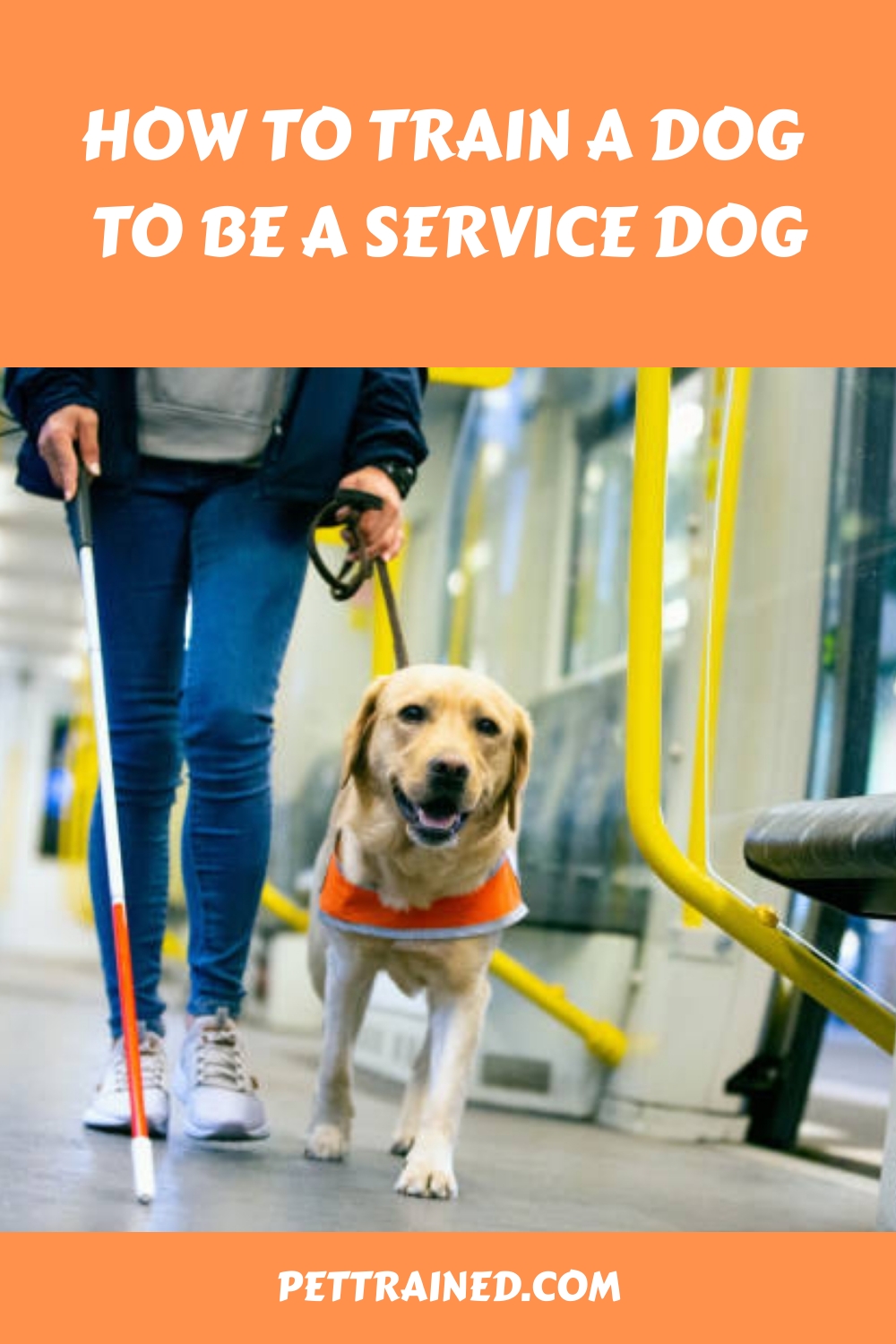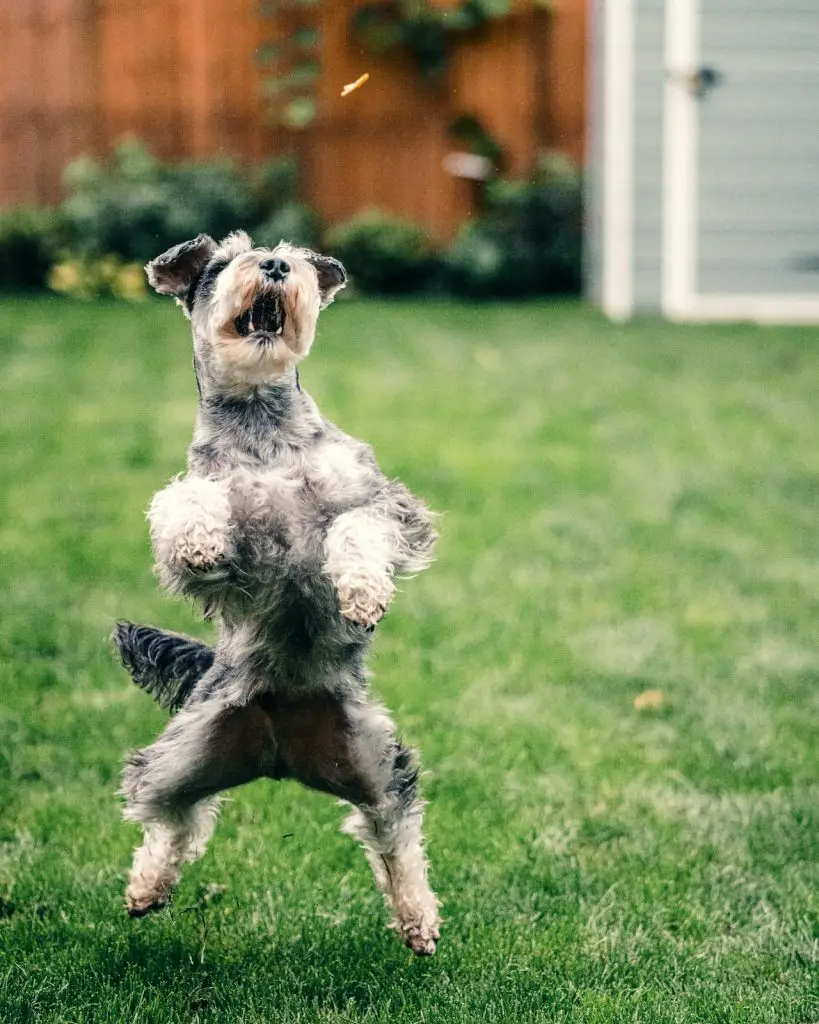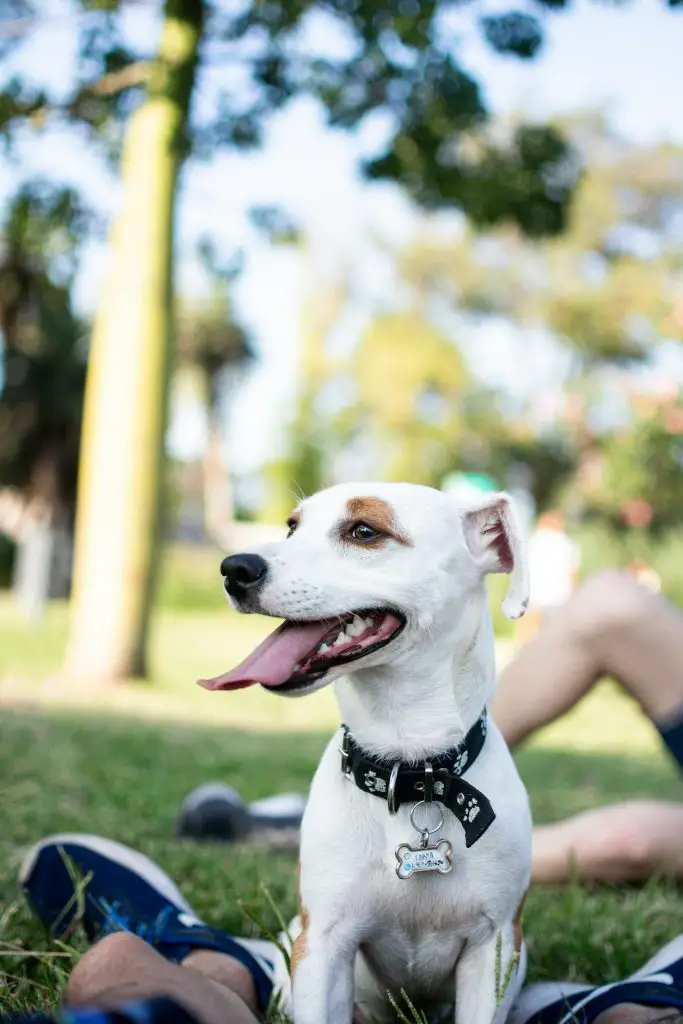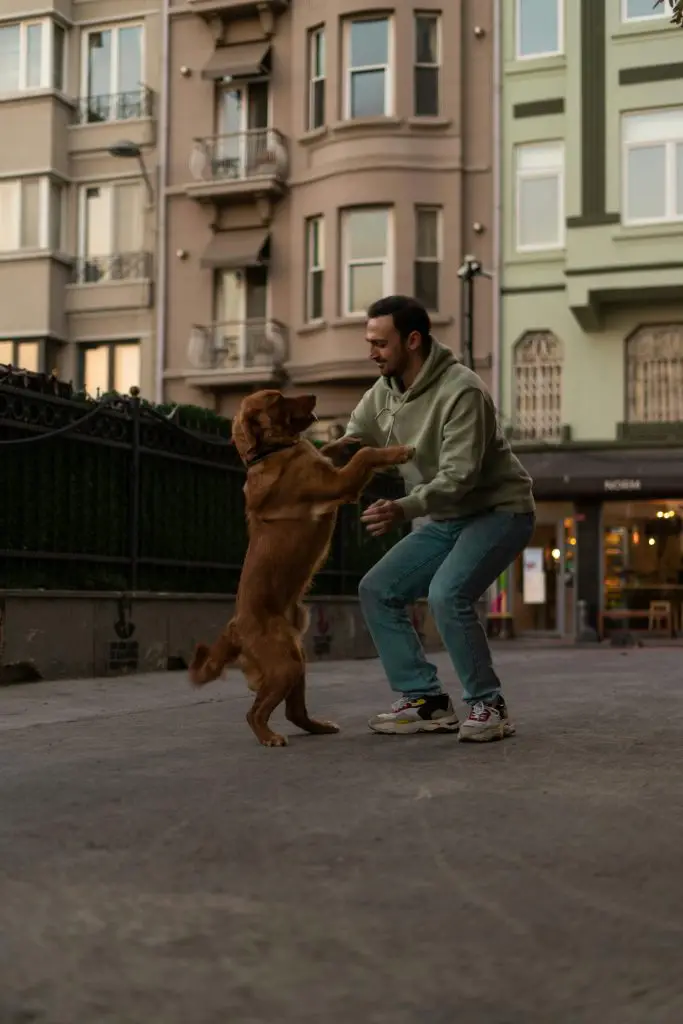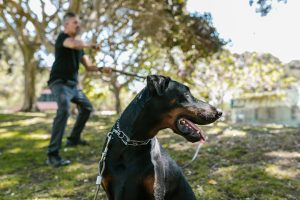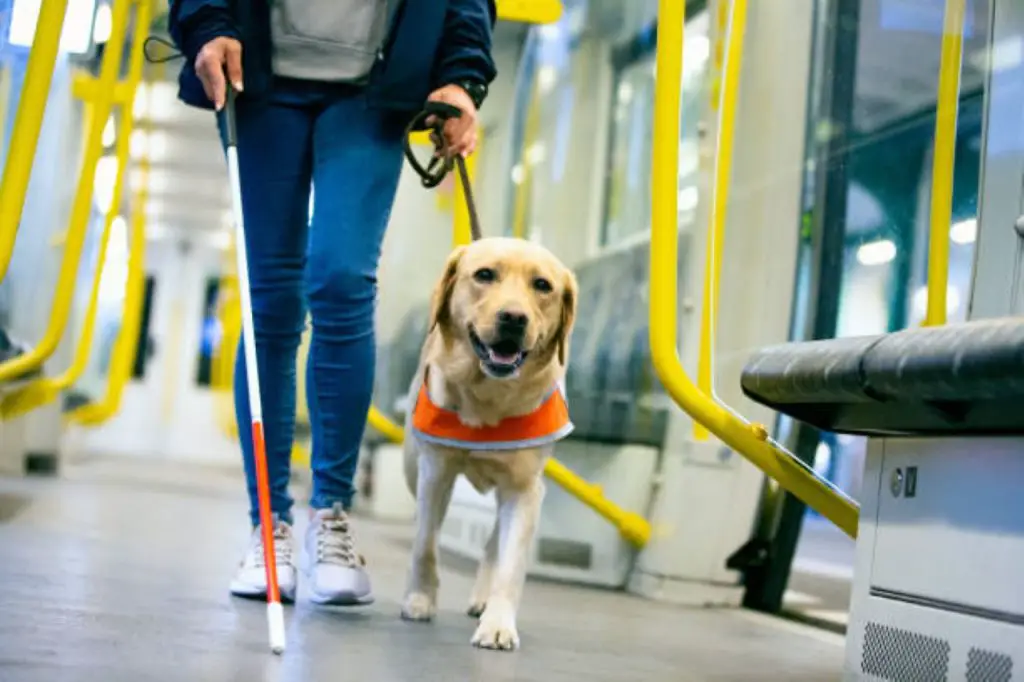
You’ll start by choosing a breed that’s well-suited for service work, such as Labradors or Golden Retrievers, and researching their characteristics to guarantee suitability. Next, you’ll obtain necessary documentation, including a letter from a licensed healthcare professional confirming your need for a service dog. You’ll then train your dog in basic obedience commands and advanced service tasks, using positive reinforcement techniques. Socialization and public access training are also essential. By following these steps, you’ll be well on your way to training a reliable service dog; understanding the specifics of each step will help you navigate this rewarding process.
Table of Contents
Choose the Right Breed

When selecting a breed to train as a service dog, you’ll want to focus on breeds known for their intelligence, loyalty, and temperament.
These characteristics are vital for a dog that needs to remain calm and composed in various environments and situations.
You’ll find that popular breeds, such as Labradors, Golden Retrievers, and German Shepherds, are often top choices for service dog training.
Their breed characteristics, including high intelligence, loyalty, and trainability, make them well-suited for this type of work.
This post contains affiliate links. However all the information provided on this site are my own honest opinions. See more in Disclaimer.
As you consider different breeds, it’s important to research their breed characteristics thoroughly. Look for breeds that are naturally calm, confident, and willing to please.
Avoid breeds that are high-strung, anxious, or stubborn, as they may not be suitable for service dog work.
Obtain Necessary Documentation
Now that you’ve chosen the right breed for your service dog, it’s time to obtain the necessary documentation.
You’ll need to meet specific eligibility criteria, gather required medical records from your healthcare provider, and register your service dog with the relevant authorities.
Meet the Eligibility Criteria
To establish your dog as a legitimate service animal, you’ll need to meet specific eligibility criteria and obtain the necessary documentation from a licensed healthcare professional.
Service dog eligibility is based on your need for assistance with a disability, which can be physical, emotional, or mental.
Emotional support animals, on the other hand, provide comfort and companionship, but aren’t considered service animals under the law.
To meet the eligibility criteria, consider the following:
- You have a disability that considerably impacts your daily life.
- Your dog is trained to perform specific tasks to mitigate the effects of your disability.
- You’re the handler of the dog and are responsible for its care and supervision.
- Your dog is well-behaved and under your control in public.
A licensed healthcare professional will evaluate your eligibility and provide the necessary documentation to support your service dog status.
This documentation is essential for accessing public places and services with your service dog.
Gather Required Medical Records
Obtaining the necessary medical records from a licensed healthcare professional is an important step in establishing your dog as a legitimate service animal.
You’ll need to gather documentation that confirms your need for a service dog. This typically involves getting a letter or prescription from your doctor or a licensed mental health professional.
They’ll need to verify that you have a legitimate medical or mental health condition that requires the assistance of a service animal.
In addition to your own medical history, you’ll also need to keep accurate veterinary records for your dog. This includes vaccination records, medical checkups, and any relevant behavioral evaluations.
Keep these records up to date, as they’ll be vital in demonstrating your dog’s suitability as a service animal.
Having a well-documented medical history and veterinary records will help guarantee that your dog is recognized as a legitimate service animal, giving you access to the rights and protections afforded by law.
Register Your Service Dog
Registering your service dog requires securing specific documentation that certifies your dog’s status as a legitimate service animal, which is essential for accessing public spaces and asserting your rights under the law.
To navigate the process smoothly, you’ll need to understand what’s involved in service dog registration. Here are key aspects to take into account:
Get an official diagnosis: Obtain a diagnosis from a licensed healthcare professional that confirms your need for a service dog.
Distinguish between service dogs and emotional support animals: Recognize the legal differences between service dogs, which are trained to perform specific tasks, and emotional support animals, which provide comfort but don’t have the same public access rights.
Choose a reputable registration platform: Select a trustworthy organization to register your service dog and guarantee you receive legitimate documentation.
Gather proof of training: Collect records of your dog’s training and any relevant medical records to support your service dog registration application.
Understand your rights and responsibilities: Familiarize yourself with the laws and regulations governing service dogs, including public access rights and owner responsibilities.
Train Basic Obedience Commands
With basic obedience commands as the foundation, you’ll build a strong, trusting relationship with your dog, as well as establish the groundwork for more advanced service dog training.
To get started, focus on positive reinforcement techniques, such as clicker training, to encourage good behavior. This approach emphasizes rewarding desired actions, rather than punishing undesired ones.
Begin with simple commands like ‘sit,’ ‘stay,’ ‘come,’ and ‘leave it.’ Use a clicker to mark the exact moment your dog performs the desired action, then immediately reward them with a treat or praise.
As your dog becomes more confident, gradually phase out the treats and use the verbal cue alone. Be consistent and patient, as building a strong foundation takes time and effort.
Mastering basic obedience commands will help you establish clear communication with your dog and lay the groundwork for more advanced training.
Teach Advanced Service Tasks
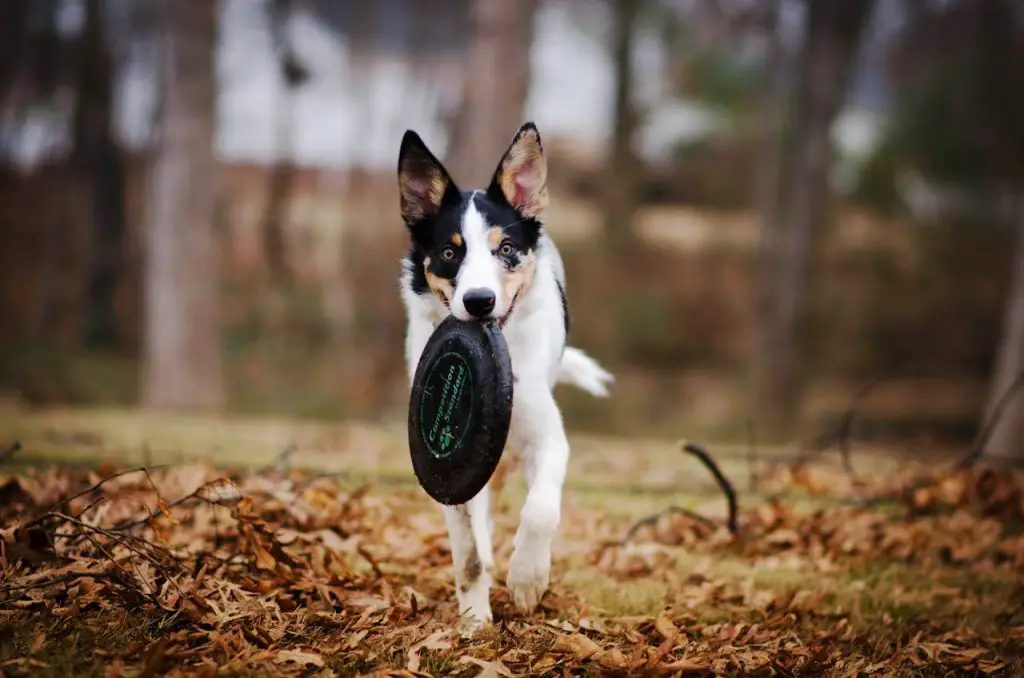
Once your dog has a solid foundation in basic obedience commands, you can start teaching them advanced service tasks that cater to your specific needs, such as opening doors, picking up items, or providing emotional support.
Trending in Dogs:
To achieve task specificity and reliability, focus on breaking down complex tasks into smaller, manageable steps. Here are some examples of advanced service tasks you can teach your dog:
- Open doors and drawers to retrieve essential items
- Pick up items like keys, phone, or wallet
- Provide emotional support by nuzzling or licking
- Assist with balance and mobility by providing counterbalance or fetching a walker
When teaching these tasks, prioritize clear communication and consistent reinforcement.
Use positive reinforcement techniques to encourage your dog’s learning and build their confidence.
Be patient and adjust your training approach as needed to guarantee task reliability.
As your dog masters these advanced tasks, you’ll notice a significant improvement in their ability to assist you in daily life.
Practice Public Access Training
As you shift from training advanced service tasks to real-life scenarios, practicing public access training becomes essential to help your dog generalize their skills in a variety of environments and situations.
You’ll want to focus on developing good public behavior, which means your dog remains calm, composed, and responsive to commands in the face of distractions.
Start by taking your dog on store visits, beginning with quiet, low-traffic areas and gradually increasing the level of activity.
As you navigate through stores, practice walking, stopping, and turning, while maintaining a loose leash. Encourage your dog to remain focused on you and respond promptly to commands.
You’ll also want to simulate real-life scenarios, such as encountering other people, animals, and obstacles. Reward your dog for calm behavior and correct any missteps promptly.
By consistently practicing public access training, you’ll help your dog become confident and reliable in a variety of situations, laying the groundwork for successful service work.
Remember to stay alert and attentive, providing clear guidance and reinforcement as needed.
Socialize Your Service Dog
As you continue to train your service dog, you’ll need to socialize them to prepare for real-world interactions.
You’ll take your dog to various public places, such as shopping malls, grocery stores, and restaurants, where they’ll encounter new sights, sounds, and smells.
Expose to Public Places
Frequently exposing your service dog to public places is crucial for helping it become confident and calm in a variety of environments, which is essential for its future role as a service animal.
To develop good public behavior, you’ll need to take your dog on regular outings to busy areas, such as shopping malls, restaurants, and public transportation.
This exposure will help your dog become desensitized to new sights, sounds, and smells.
To help your dog develop noise tolerance and good public behavior, try the following:
- Take your dog to a busy coffee shop or cafe to get it used to the sounds of coffee machines and chatter.
- Walk your dog through a crowded shopping mall or store to help it become comfortable with tight spaces and loud noises.
- Visit a park or other outdoor area with your dog to expose it to new smells and sounds.
- Take a bus or train ride with your dog to help it get used to the motion and sounds of public transportation.
Interact With New People
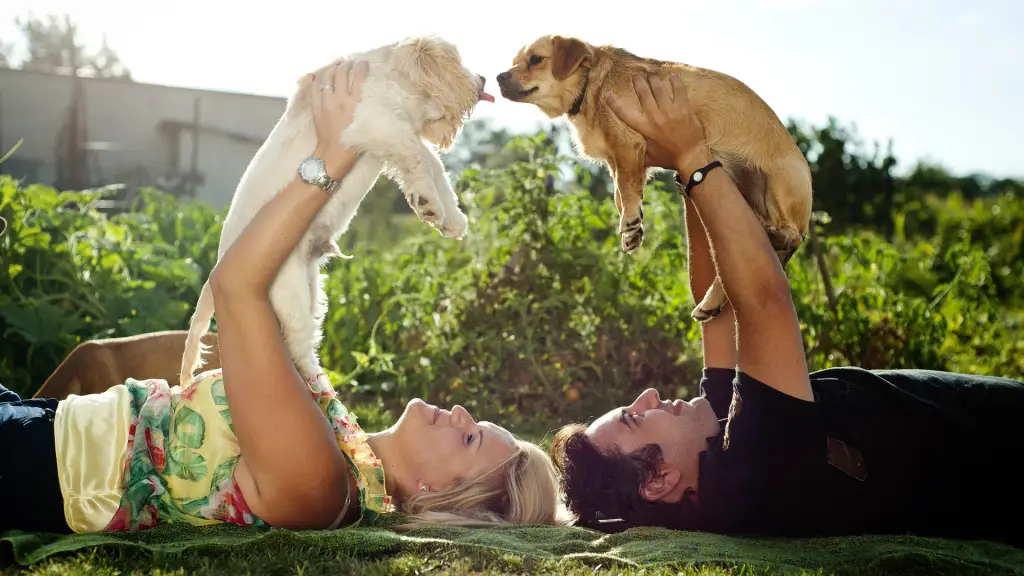
To help your service dog excel in its role, you’ll need to socialize it extensively with new people, teaching it to interact calmly and confidently with strangers in a variety of situations.
This means exposing your dog to many different individuals, including those with varying ages, ethnicities, and abilities.
Start by introducing your dog to people in a controlled environment, such as a training room or quiet park. Use positive reinforcement techniques, like treats and praise, to encourage good behavior.
As your dog becomes more confident, you can move on to more challenging situations, like busy streets or shopping malls.
Practice greeting techniques, such as calmly approaching people and responding to basic commands.
Pay attention to your dog’s body language, watching for signs of stress or anxiety, like a tucked tail or raised hackles.
By teaching your service dog to interact calmly with new people, you’ll help it become a reliable and trustworthy companion.
With patience, consistency, and positive reinforcement, your service dog will learn to navigate a wide range of social situations with ease and confidence.
Handle Distractions and Emergencies
Your service dog’s ability to focus and remain calm in the face of distractions and emergencies is essential to ensuring a safe and successful partnership.
To achieve this, you’ll need to teach your dog distraction techniques and emergency response strategies.
Start by exposing your dog to various distractions, such as loud noises, other animals, and crowded areas, while maintaining their focus on you.
Some scenarios to practice with your service dog include:
- Walking through a busy shopping mall or street
- Encountering other animals, such as dogs, cats, or birds
- Responding to sudden loud noises, like sirens or fireworks
- Maneuvering through tight spaces or crowded areas
Maintain Training and Certification
Once you’ve equipped your service dog to handle distractions and emergencies, you must commit to regular training and recertification to guarantee their skills remain sharp and their certification stays current.
This means setting aside time each week for training sessions, practicing obedience commands, and reinforcing good behavior.
Consistency is key when it comes to maintaining your service dog’s training, so establish a routine and stick to it.
As for certification renewal, check with the organization that initially certified your service dog to determine the requirements for recertification.
Some organizations may require annual or bi-annual recertification, while others may have different criteria.
Be sure to stay on top of these requirements to avoid lapses in certification. By prioritizing training consistency and certification renewal, you can assure your service dog remains a valuable and reliable companion.
Frequent Questions

‘When evaluating a dog’s potential, you’ll consider breeds’ suitability and conduct a temperament assessment. While many breeds can be trained, not all dogs possess the necessary characteristics; it’s essential to assess yours carefully.’
You’re enthusiastic to see results, but patience is key – training a service dog can take anywhere from 6 to 24 months, depending on the type of service dog and its specific tasks, requiring consistent, personalized training.
You can train a service dog yourself, but you’ll face significant self-training challenges. Consider hiring a professional trainer, as their expertise provides numerous benefits, including customized training plans and addressing specific behavioral issues efficiently.
“Like a superhero’s cape, service dog gear can be a visible indicator of a dog’s role, but it’s not a requirement. You don’t need to dress your dog in a special vest, and there’s no standardized identification requirements.”
You can take your service dog anywhere, thanks to public access laws. As a handler, you’ve got rights. Your service dog’s allowed to accompany you in all public spaces, no exceptions, no hassle.
